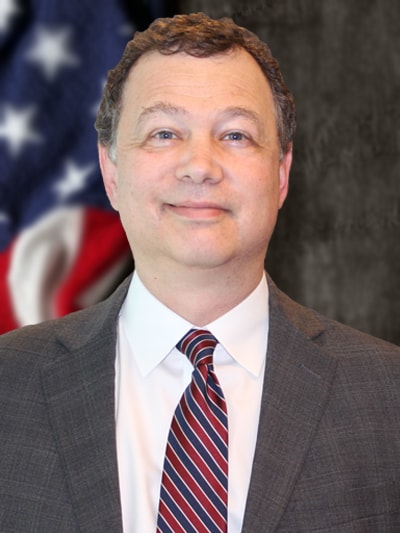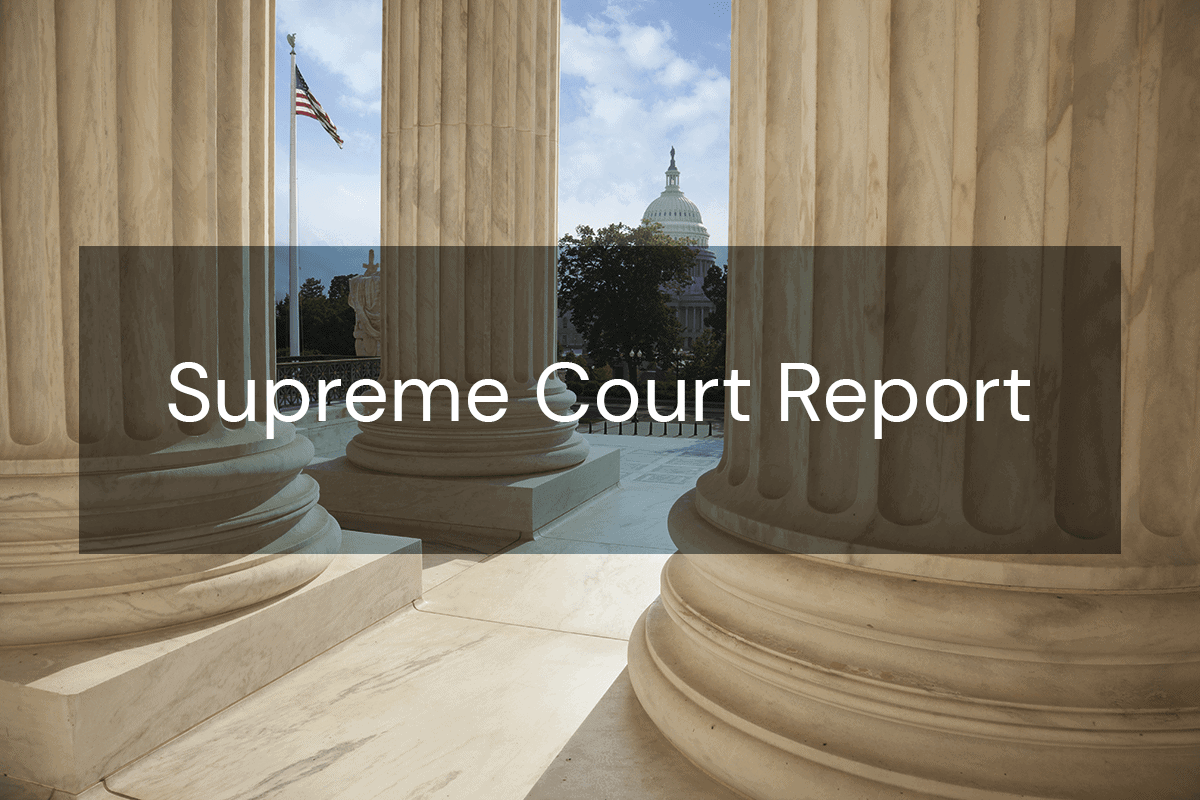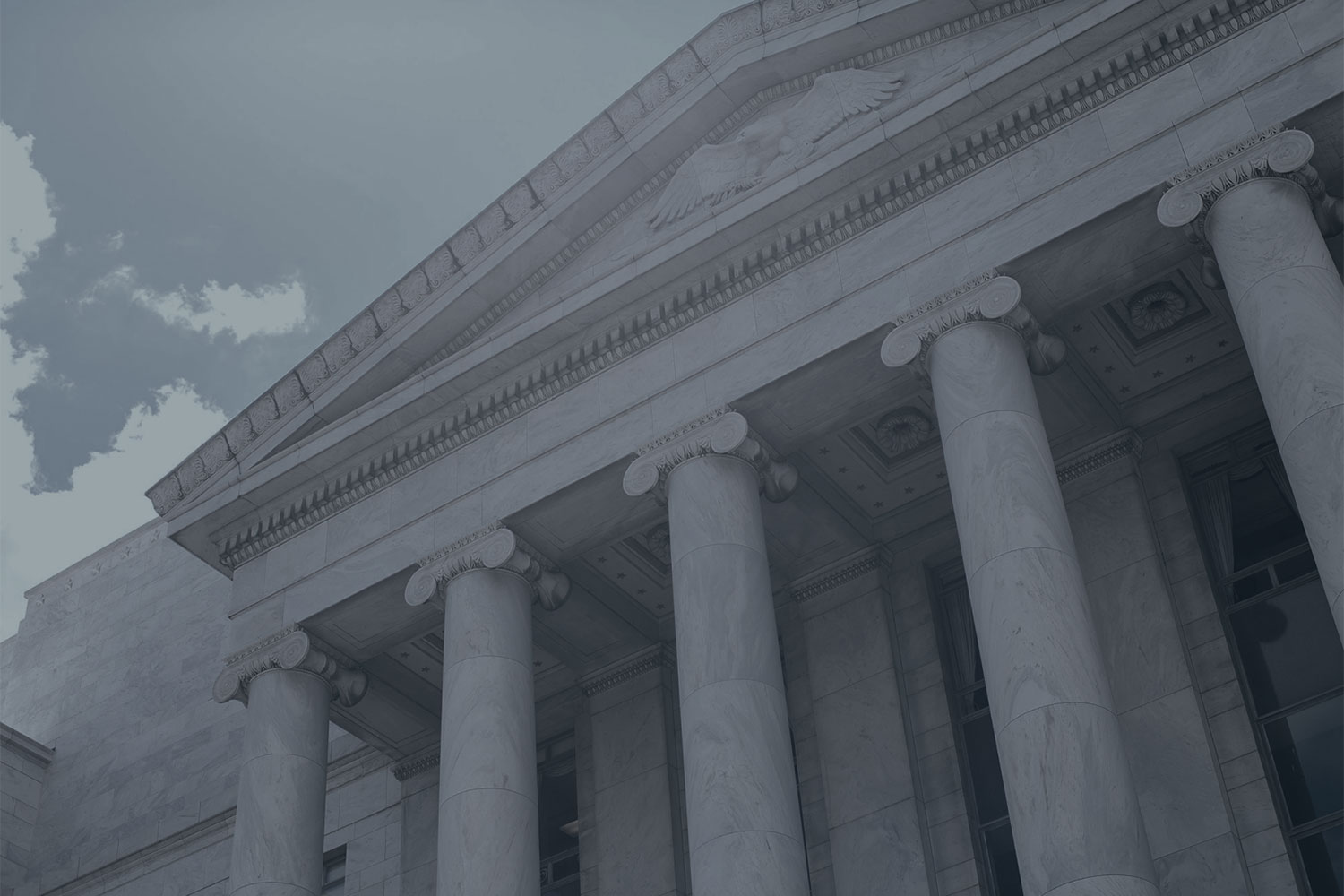-
 Director, Center for Supreme Court AdvocacyNational Association of Attorneys General
Director, Center for Supreme Court AdvocacyNational Association of Attorneys General

This Report summarizes opinions issued on June 27, 29, and 30, 2022 (Part I).
Opinion: Kennedy v. Bremerton School District, 21-418
Kennedy v. Bremerton School District, 21-418. By a 6-3 vote, the Court held that a school district violated the Free Speech and Free Exercise Clause rights of a football coach when it sanctioned him for kneeling and saying a prayer at midfield alone after the game ended. Joseph Kennedy served as a football coach at Bremerton High School. He made it a practice to give “thanks through prayer on the playing field” at the end of each game, by taking a knee at the 50-yard line and praying “quiet[ly]” for about 30 seconds. At first, he prayed on his own; then a number of his players joined him. When the school district learned about this practice (about eight years after it started), it sent a September 17, 2015 letter asking him to cease several prayer-related activities that had been taking place. On October 14, Kennedy (through counsel) sent school officials a letter informing them that he felt “compelled” by his “sincerely-held religious beliefs” to continue his post-game prayer at midfield, and asking that he be allowed to continue doing so alone (while the players were away). The district responded through an October 16 letter forbidding Kennedy from engaging in “any overt action” that could “appea[r] to a reasonable observer to endorse . . . prayer . . . while he is on-duty as a District-paid coach.” That same day, following a football game Kennedy offered a prayer at midfield. He was alone at first, but players from the other team and members of the community joined him before he concluded. After an October 23 game ended, Kennedy knelt and prayed at the 50-yard line, and no one joined him. And after an October 26 game, Kennedy again knelt alone at midfield to pray while his players were otherwise occupied. While he was praying, other adults gathered around him. Shortly after the October 26 game, the district placed Kennedy on paid administrative leave. The district gave Kennedy a poor performance evaluation and advised against rehiring him. Kennedy did not return for the next season. Kennedy sued in federal court, alleging that the district’s actions violated the First Amendment’s Free Speech and Free Exercise Clauses and moving for a preliminary injunction requiring the district to reinstate him. The district court denied the motion, the Ninth Circuit affirmed, and the Supreme Court denied his cert petition. The district court then granted summary judgment to the district, and the Ninth Circuit affirmed. It agreed with the district court that Kennedy’s speech counted as government speech and that, even if it were private speech, the district had adequate justification for its actions, namely, to avoid an Establishment Clause violation. That is so, reasoned the court, because an ”objective observer” would conclude that the district “endorsed Kennedy’s religious activity by not stopping the practice.” In an opinion by Justice Gorsuch, the Court reversed.
Starting with the Free Exercise Clause, the Court found that Kennedy met his burden of showing that he sought “to engage in a sincerely motivated religious exercise.” And “[t]he contested exercise before us does not involve leading prayers with the team or before any other captive audience. . . . The District disciplined him only for his decision to persist in praying quietly without his players after three games in October 2015.” Nor, found the court, did the district act pursuant to a neutral and generally applicable rule. Thus, strict scrutiny applies. As to Kennedy’s free speech claim, the Court disagreed with the lower courts that Kennedy’s speech was government, as opposed to private, speech. “When Mr. Kennedy uttered the three prayers that resulted in his suspension, he was not engaged in speech ‘ordinarily within the scope’ of his duties as a coach. He did not speak pursuant to government policy. He was not seeking to convey a government-created message. . . . Simply put: Mr. Kennedy’s prayers did not ‘ow[e their] existence’ to Mr. Kennedy’s responsibilities as a public employee.” (Citation omitted.) In that regard, the Court emphasized that Kennedy “offered his prayers when students were engaged in other activities like singing the school fight song.” True, found the Court, Kennedy remained on duty after games. But it is wrong to “treat[] everything teachers and coaches say in the workplace as government speech subject to government control. On this understanding, a school could fire a Muslim teacher for wearing a headscarf in the classroom or prohibit a Christian aide from praying quietly over her lunch in the cafeteria.”
At this point, said the Court, the burden shifted to the district to justify its actions under strict scrutiny for the free exercise claim and a similar standard for the free speech claim. The Court ruled that the district could not meet its burden. The Court observed that the Ninth Circuit ruled that the district’s interest in avoiding an Establishment Clause violation “’trump[ed]’” Kennedy’s free exercise and free speech rights. But that makes no sense, found the Court, because “the Clauses have ‘complementary’ purposes, not warring ones where one Clause is always sure to prevail over the others.” The Court then faulted the district and the Ninth Circuit for relying on the Lemon test. See Lemon v. Kurtzman, 403 U.S. 602 (1971). That approach (as it evolved over time) asks whether a “reasonable observer” would consider the challenged action a government “endorsement” of religion. “What the District and the Ninth Circuit overlooked, however, is that the ‘shortcomings’ associated with this ‘ambitiou[s],’ abstract, and ahistorical approach to the Establishment Clause became so ‘apparent’ that this Court long ago abandoned Lemon and its endorsement test offshoot.” Instead, the “Court has instructed that the Establishment Clause must be interpreted ‘by reference to historical practice and understandings,’” which must “’accor[d] with history and faithfully reflec[t] the understanding of the Founding Fathers.’”
The district argued as a backup that its Establishment Clause concerns still prevail because Kennedy was coercing students to pray. The Court found, however, that “[t]he evidence cannot sustain” that claim. The Court noted that the district did not mention coercion concerns in its letters to Kennedy, and that Kennedy’s requests did not involve praying with the students. The Court recognized that “some people would have seen his religious exercise. Those close at hand might have heard him too.” “But,” stated the Court, “learning how to tolerate speech or prayer of all kinds is ‘part of learning how to live in a pluralistic society,’ a trait of character essential to ‘a tolerant citizenry.’ This Court has long recognized as well that ‘secondary school students are mature enough . . . to understand that a school does not endorse,’ let alone coerce them to participate in, ‘speech that it merely permits on a nondiscriminatory basis.’” “Nor,” found the Court, “is there any record evidence that students felt pressured to participate in these prayers.” Indeed, no Bremerton student joined Kennedy’s prayers following the three October 2015 games for which he was disciplined. Finally, the Court rejected the proposition that “any visible religious conduct by a teacher or coash should be deemed . . . impermissibly coercive,” stating that “[s]uch a rule would be a sure sign that our Establishment Clause jurisprudence had gone off the rails. In the name of protecting religious liberty, the District would have us suppress it.”
Justice Thomas filed a concurring opinion noting that the Court was not resolving two issues: (1) “whether or how public employees’ rights under the Free Exercise Clause may or may not be different from those enjoyed by the general public”; and (2) “what burden a government employer must shoulder to justify restricting an employee’s religious expression.” He noted that the Court has not yet “applied Pickering balancing to a claim brought under the Free Exercise Clause.” Justice Alito filed a one-paragraph concurring opinion to note that “[p]etitioner’s expression occurred while at work but during a time when a brief lull in his duties apparently gave him a few free moments to engage in private activities. . . . The Court does not decide what standard applies to such expression under the Free Speech Clause but holds only that retaliation for this expression cannot be justified based on any of the standards discussed.”
Justice Sotomayor filed a dissenting opinion, which Justices Breyer and Kagan joined. The dissent faulted the majority’s portrayal of the facts, insisting that “[o]ver time, [] a majority of the team came to join [Kennedy], with the numbers varying from game to game. Kennedy’s practice evolved into postgame talks in which Kennedy would hold aloft student helmets and deliver speeches with ‘overtly religious references,’ which Kennedy described as prayers, while the players kneeled around him.” The dissent noted that Kennedy was surrounded by members of the other team and the public on October 23; and by members of the public on October 26. All told, then, said the dissent, “[t]his case is about whether a school district is required to allow one of its employees to incorporate a public, communicative display of the employee’s personal religious beliefs into a school event, where that display is recognizable as part of a longstanding practice of the employee ministering religion to students as the public watched.” Justice Sotomayor maintained that the Establishment Clause prohibits a school from permitting such conduct.
Justice Sotomayor noted that the Court “has been particularly vigilant in monitoring compliance with the Establishment Clause in elementary and secondary schools,” where teachers exercise “great authority over children, who are uniquely susceptible to ‘subtle coercion.’” She found the Establishment Clause “clear[ly]” violated here. “Kennedy’s tradition of a 50-yard line prayer thus strikes at the heart of the Establishment Clause’s concerns about endorsement.” And it “also implicated the coercion concerns” because students face “immense social presure” to seek approval of their teachers and coaches. Although “Kennedy stresses that he never formally required students to join him in his prayers . . . existing precedents do not require coercion to be explicit, particularly when children are involved.” Turning to the majority’s treatment of the Free Exercise and Establishment Clauses, the dissent insisted that the Court “has long recognized that these two Clauses, while ‘express[ing] complementary values,’ ‘often exert conflicting pressures.’” “The proper response when tension arises between the two Clauses is not to ignore it, which effectively silently elevates one party’s right above others.” Justice Sotomayor criticized the majority for jettisoning the long-established endorsement test and overruling the Lemon test. “To put it plainly, the purposes and effects of a government action matter in evaluating whether that action violates the Establishment Clause, as numerous precedents beyond Lemon instruct in the particular context of public schools.” And “while the Court has long referred to historical practice as one element of the analysis in specific Establishment Clause cases, the Court has never announced this as a general test or exclusive focus.” Justice Sotomayor noted the challenges with a test that looks solely to history, and said “the Court’s history-and-tradition test offers essentially no guidance for school administrators.” Finally, Justice Sotomayor criticized the majority’s treatment of coercion, finding that it “misconstrues both the record and this Court’s precedents.” “Nowhere,” she said, “does the Court engage with the unique coercive power of a coach’s actions on his adolescent players.”



